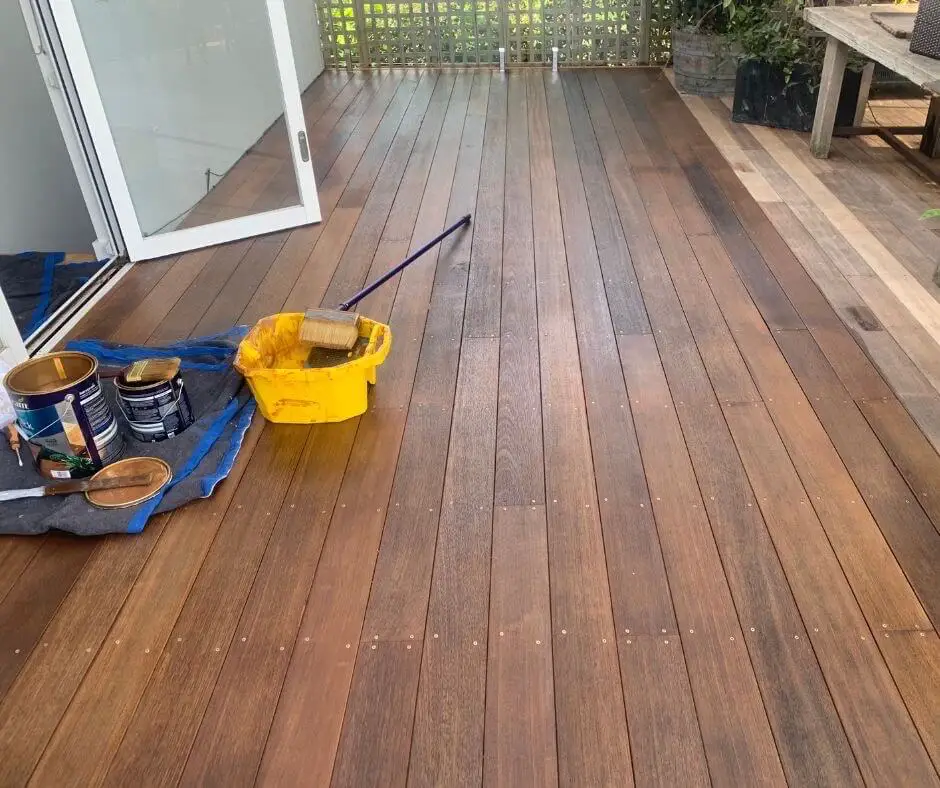A Comprehensive Guide to Various Kinds Of Deck Staining Techniques for Ultimate Defense and Aesthetics
In the realm of deck maintenance, the art of tarnishing stands as a critical action in the direction of both preserving the stability of your exterior space and improving its aesthetic charm. As we navigate via the complex world of deck staining techniques, one begins to value the nuanced approaches that can make all the difference between an average coating and a flawless one. From the choice of the ideal stain kind to the precise application approaches, each facet plays a vital function in accomplishing that perfect balance between defense and aesthetic appeals. Join us as we uncover the keys behind attaining the supreme deck staining results-- a trip where every brushstroke shapes not just the surface area, however the very significance of your outside refuge.
Understanding Different Sorts Of Discolorations
Numerous types of spots are generally made use of in the process of deck discoloration to attain different aesthetic and protective impacts. On the other hand, semi-transparent discolorations supply an equilibrium in between shade enhancement and security, allowing some wood grain to reveal with.
Toners include a hint of shade to the timber while offering very little defense, making them suitable for newer decks with less wear. Comprehending the characteristics and advantages of each type of discolor is essential for accomplishing the desired look and longevity for your deck.
Selecting the Right Spot Shade
When taking into consideration the appearances of your deck staining job, the selection of discolor shade plays a vital function in improving the protective high qualities of the picked discolor type (Right Deck Stain). The shade you choose can substantially impact the overall look of your deck, along with its ability to withstand the components over time
When selecting a stain shade, it's essential to take into consideration the existing color design of your home's outside. Harmonizing the deck stain with the total aesthetic of your residential property can create a aesthetically attractive and cohesive exterior area. Additionally, the shade of your deck discolor can affect the temperature level of the deck surface area; darker colors have a tendency to soak up more heat, while lighter shades reflect sunlight and stay cooler.
In addition, the sort of timber you are tarnishing will certainly likewise affect just how the stain shade shows up. Various timber types can interact with the discolor in various ways, potentially altering the last shade. It's recommended to examine the stain on a little, inconspicuous location of the deck to ensure the color ends up as wanted before waging the entire job.
Preparing Your Deck for Staining
To make certain a lasting and successful deck staining project, extensive preparation of the deck surface area is crucial. Begin by cleaning up the deck thoroughly to remove dirt, grime, mildew, and any type of old tarnish or finish.
Check the deck for any kind of harmed or rotten boards that require to be replaced. Hammer down any extending nails and sand any type of rough areas to ensure a smooth surface area for discoloration. Examine for any type of loosened railings or actions that may need tightening up or repair work.
Once the deck is tidy, dry, and in good fixing, think about using a wood brightener to restore the deck's natural color and open up the timber pores for better stain penetration. Protect any kind of nearby plants, furniture, or surface areas with plastic sheeting before proceeding with the staining procedure. Correct preparation is essential to attaining a professional-looking coating and maximizing the longevity of your deck tarnish.
Applying Discoloration With Different Strategies
For a flawless and professional finish, the technique of applying stain plays a critical function in improving the appearance and toughness of your deck. There are a number of techniques you can use to guarantee a reliable application of discolor.
It is ideal for elaborate locations and reaching between deck boards. Back-brushing after rolling is advised to even out the stain and work it right into the timber for far better penetration.
Spraying is an additional preferred method, offering rate and convenience of application, especially for large deck locations. Whichever technique you choose, making sure proper prep work and adhering to maker guidelines will certainly assist achieve a stunning and durable discolor surface on your deck.

Maintaining and Re-staining Your Deck
When it comes to re-staining your deck, the regularity depends on numerous aspects such as the type of discolor used, the climate in your location, and exactly how much wear and tear your deck experiences. Generally, it is suggested to re-stain your deck you can look here every 2-4 years to preserve its protection and looks.
Prior to re-staining, make certain the deck is clean, dry, and free of any type of previous discolor residue. Select a high-grade tarnish that matches your deck's product and gives the desired degree of protection.
Conclusion
To conclude, understanding the different kinds of deck stains, choosing the right shade, effectively preparing the deck, using tarnish with different methods, and re-staining the deck and maintaining are important steps for supreme security and looks. By complying with these actions, you can make sure that your deck stays in leading condition for years ahead.
In addition, the color of your deck discolor can influence this hyperlink the temperature of the deck surface area; darker shades have a tendency to absorb even more warmth, while lighter colors reflect visit sunshine and stay cooler.
It's advisable to test the stain on a tiny, unnoticeable area of the deck to make certain the shade turns out as wanted prior to continuing with the entire project.

Comments on “Beautiful Deck Changes: Making Use Of the Perfect Stain”